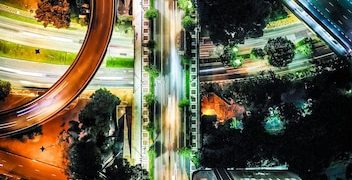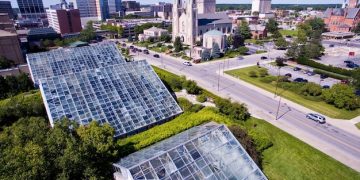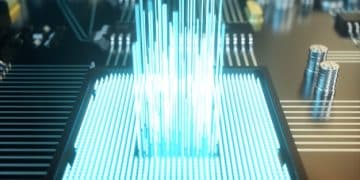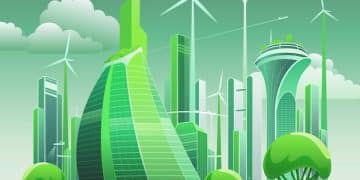Circular Economy: Untapped Potential for US Businesses in 2025
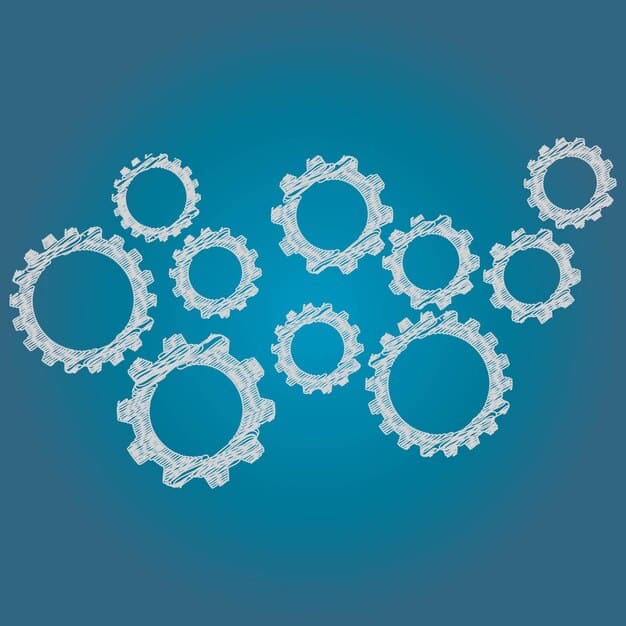
Discover the Untapped Potential of Circular Economy Models for US Businesses in 2025 by exploring how these sustainable practices can drive innovation, reduce waste, and unlock significant economic opportunities for companies across the United States.
The concept of a circular economy is rapidly gaining traction as businesses seek more sustainable and resilient operating models. Discover the Untapped Potential of Circular Economy Models for US Businesses in 2025 and understand how rethinking traditional linear approaches (“take-make-dispose”) can lead to innovation, cost savings, and a competitive edge.
Understanding the Circular Economy: A 2025 Perspective
The circular economy isn’t just a buzzword; it’s a fundamental shift in how we design, produce, and consume goods. It’s about creating closed-loop systems where resources are valued throughout their lifecycle, minimizing waste, and maximizing value.
By 2025, the circular economy is poised to become a mainstream business strategy. Let’s delve into what it means for US businesses.
Key Principles of a Circular Economy
The circular economy revolves around several core principles, all aimed at creating a more sustainable and resource-efficient system.
- Design for Durability and Reusability: Products are designed to last longer and be easily repaired, refurbished, or remanufactured.
- Resource Efficiency: Minimizing the use of virgin materials and maximizing the use of recycled and renewable resources.
- Waste Reduction: Eliminating waste through better design, reuse, and recycling.
- Closed-Loop Systems: Creating systems where products are returned, reused, or recycled at the end of their life, feeding back into the production cycle.
These principles, when implemented effectively, can lead to significant cost savings, reduced environmental impact, and enhanced brand reputation.
In essence, the circular economy encourages businesses to think beyond the traditional linear model and embrace a more holistic and sustainable approach to resource management.
Benefits of Circular Economy Models for US Businesses
Adopting circular economy models offers a multitude of benefits for US businesses, ranging from cost savings to enhanced brand value. These benefits can contribute to long-term sustainability and competitive advantage.
By 2025, businesses that embrace these models are likely to see a significant return on their investment.
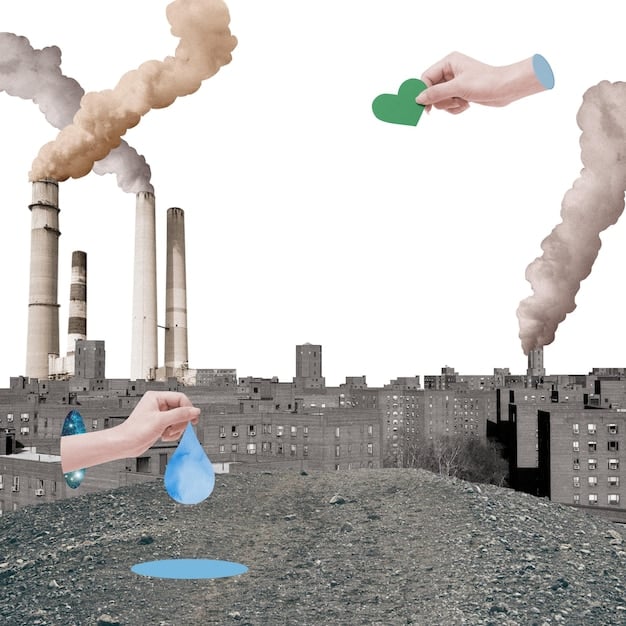
Economic Advantages
Circular economy models can unlock significant economic opportunities for US businesses.
These advantages include:
- Reduced Material Costs: Using recycled and renewable materials can lower material costs compared to relying solely on virgin resources.
- New Revenue Streams: Refurbishing, remanufacturing, and leasing models can create new revenue streams.
- Increased Efficiency: Optimizing resource use can lead to greater operational efficiency and lower production costs.
Implementing circular strategies can significantly improve a company’s bottom line while also contributing to a more sustainable future.
Furthermore, access to innovative technologies and financial incentives are making the transition to circularity more economically viable for businesses of all sizes.
Successful Circular Economy Strategies for 2025
Several circular economy strategies are proving successful for businesses across various sectors. These strategies can be tailored to fit specific business needs and objectives.
In 2025, expect to see further innovation and adoption of these models.
Product-as-a-Service (PaaS)
This involves offering products as a service rather than selling them outright. Customers pay for the use of the product, while the company retains ownership and responsibility for maintenance and end-of-life management.
Closed-Loop Recycling
This involves collecting and recycling products back into new products, creating a closed-loop system that minimizes waste. Innovative recycling technologies are making this more efficient and cost-effective.
Ultimately, those companies that invest in and strategically integrate such sustainable techniques stand to benefit greatly.
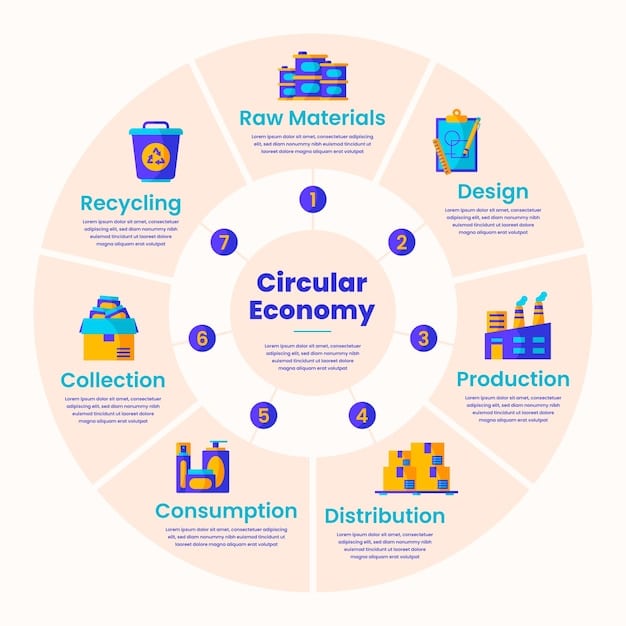
Overcoming Challenges in Implementing Circular Economy
While the benefits of circular economy models are clear, implementing them can present several challenges for US businesses. Overcoming these challenges requires careful planning and strategic execution.
By addressing these hurdles proactively, businesses can successfully transition to a circular economy model.
Initial Investment Costs
Transitioning to circular models often requires upfront investments in new technologies, processes, and infrastructure.
- Solution: Explore funding opportunities, such as government grants, tax incentives, and venture capital specifically targeted at circular economy initiatives.
Supply Chain Complexity
Managing reverse logistics and ensuring the quality of recycled materials can add complexity to the supply chain.
- Solution: Invest in robust tracking and tracing systems to monitor the flow of materials and products throughout the supply chain.
Consumer Acceptance
Ensuring that consumers are willing to embrace refurbished or remanufactured products can be a challenge.
- Solution: Educate consumers about the benefits of circular products, such as lower prices and reduced environmental impact.
Successfully navigating these challenges requires strong leadership, a clear vision, and a commitment to long-term sustainability.
Implementing circular economy models is a journey that requires ongoing adaptation and refinement.
Technological Innovations Driving Circularity in 2025
Technological innovations are playing a crucial role in enabling and accelerating the transition to a circular economy. These technologies are improving resource efficiency, reducing waste, and facilitating closed-loop systems.
In 2025, expect to see even more advanced technologies driving circularity.
Advanced Recycling Technologies
New recycling technologies can process a wider range of materials and produce higher-quality recycled materials. These technologies are essential for closing the loop on many products.
Digital Platforms for Material Exchange
Digital platforms are connecting businesses to facilitate the exchange of waste materials, creating a marketplace for secondary resources. This helps to reduce waste and create new value streams.
Data analytics also plays a crucial role in tracking material flows, identifying opportunities for optimization, and measuring the impact of circular economy initiatives.
These advances in technology are not only making circularity more feasible but also more economically attractive for businesses.
Policy and Regulatory Landscape for Circular Economy in the US
Government policies and regulations are increasingly supporting the transition to a circular economy in the US. These policies are designed to incentivize businesses to adopt circular practices and create a level playing field.
Staying informed about these policies and regulations is essential for US businesses looking to embrace circularity.
Extended Producer Responsibility (EPR)
EPR policies hold producers responsible for the end-of-life management of their products. This incentivizes them to design products that are easier to recycle and reuse.
Incentives for Recycling and Reuse
Governments are offering tax incentives, grants, and other financial support to encourage recycling and reuse initiatives. These incentives can make circular projects more economically viable.
Ultimately, an understanding of and willingness to comply with legislation is vital.
| Key Point | Brief Description |
|---|---|
| ♻️ Circular Economy | A sustainable economic model focused on minimizing waste and maximizing resource use. |
| 💰 Economic Benefits | Reduced costs, new revenue streams, and greater efficiency through resource optimization. |
| 🚀 Tech Innovations | Advanced recycling and digital platforms are key drivers for circularity in business. |
| 📜 US Policies | EPR and incentives support businesses in adopting sustainable, circular practices. |
FAQ
▼
The circular economy is a system aimed at minimizing waste and making the most of resources. Unlike the linear economy (“take-make-dispose”), it emphasizes reuse, repair, and recycling.
▼
The main benefits include reduced material costs, new revenue streams through innovative business models, and enhanced brand reputation due to sustainable practices.
▼
Product-as-a-Service (PaaS), where companies lease products instead of selling them, and closed-loop recycling, where products are recycled back into new products, are both viable strategies.
▼
Extended Producer Responsibility (EPR) is a policy approach where producers are responsible for managing the end-of-life of their products, encouraging them to design for easier recycling and reuse.
▼
Challenges include the initial investment costs, complexity in managing supply chains, and ensuring consumer acceptance of refurbished or remanufactured products.
Conclusion
Discovering the Untapped Potential of Circular Economy Models for US Businesses in 2025 is not just a trend but a necessity for sustainable growth. By embracing the principles of circularity, businesses can unlock new opportunities, reduce waste, and contribute to a more resilient and environmentally responsible economy in the United States.
